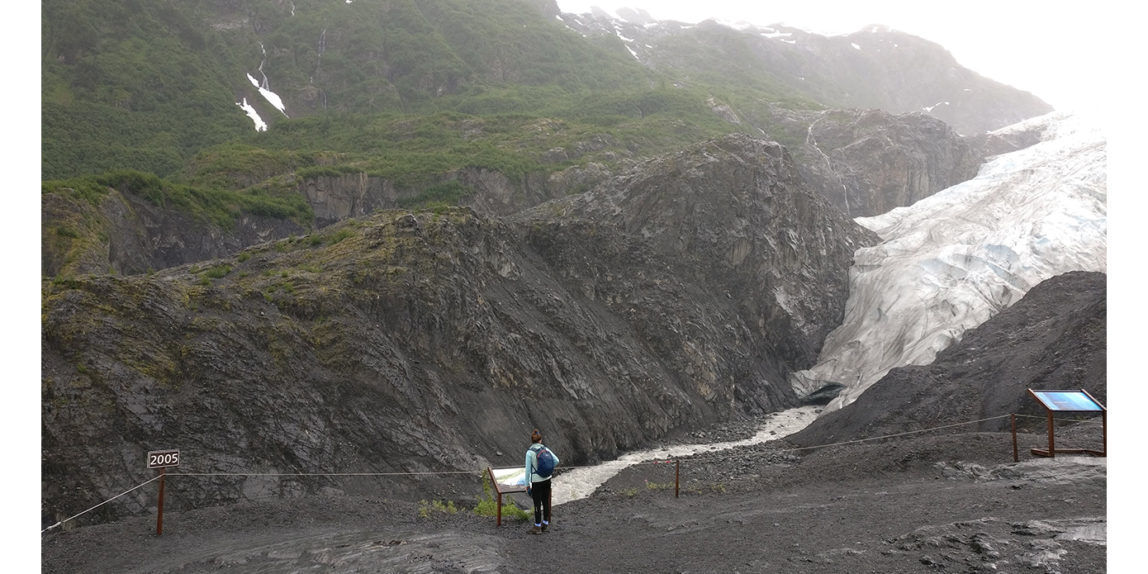Week one and the first webinar. First time showing work and first time interacting with fellow students. So there was that wonderful mix of excitement and trepidation. Of course everything went well, my peers are lovely and Cemre was very encouraging.
The topic was the Global Image. I showed three pictures, one of which is included at the top of this post. This is the image to which I felt the most attachment and which seems the most likely to be a basis for future research work.
The picture was made in July 2018 and shows Exit Glacier in Alaska. The glacier is the white area to the right of the picture. Like many glaciers, it has shrunk under the influence of climate change. The sign on the left of the image shows where the ice wall, the face of the glacier, was in 2005. More year markers are placed down the valley as one approaches the glacier, showing where the ice wall was at different points over the last 100 years.
Even within the frame of this picture, an enormous amount of ice has vanished. The ice would have extended along the canyon to where the marker is placed. The barren foreground where my daughter is standing would have been covered in ice. Now it’s all gone, it has flowed into Resurrection Bay and is contributing to rising sea levels around the world.
I felt this worked as a Global Image as it addressed a global issue. Just as one might photograph a damaged building or a wounded person in a war zone, this shrinking glacier is a signifier of a greater crisis.
Humans are not unique in making changes to the world. Termites build towers, beavers change the course of waterways and deer mark out routes through pasture and woods. But no other creature has been so determined to make its mark upon the earth as homo sapiens. Human efforts to alter the earth are not limited to providing food and shelter. Some the most enduring changes are motivated by vanity. Egyptian kings built pyramids to be buried in. A simple grave was deemed inadequate for people of their status. The landscapes of Capability Brown and his successors were created because the land was insufficiently “beautiful” for it’s wealthy owners.
This vanity based relationship with the earth is in parts both deeply troubling and fascinating. In many instances, it leads to crisis. Typically these crises were local matters; enslavement of a group of people, loss of water sources, localised pollution. But now the world faces a global crisis caused by the relentless pursuit of monetary profit through the exploitation of fossil fuel resources.
From the first campfires, shelters and farms to a global crisis threatening humanity’s relationship with the earth is a long story. But I believe that within it is the basis of a fascinating research project.
